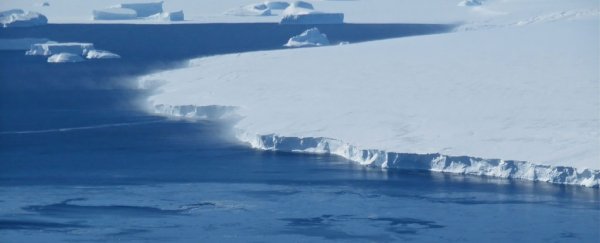With the 2015 United Nations Climate Change Conference set to commence next month with the objective of securing a binding, universal agreement to limit global temperature increase, there's never been a more dramatically opportune moment for world leaders to take a meaningful stand against rising sea levels.
And we don't have any time to lose. New research published this week suggests that if temperatures rise just 1.5°C to 2°C above present levels it will result in a catastrophic collapse in Antarctic ice sheets, ensuring sea levels will rise for not hundreds of years – but potentially thousands.
"The long reaction time of the Antarctic ice-sheet – which can take thousands of years to fully manifest its response to changes in environmental conditions – coupled with the fact that CO₂ lingers in the atmosphere for a very long time, means that the warming we generate now will affect the ice sheet in ways that will be incredibly hard to undo," said Nicholas Golledge, a senior research fellow from the Antarctic Research Centre at the Victoria University of Wellington in New Zealand.
Together with researchers from the University of New South Wales (UNSW) in Australia, Golledge used computer modelling to simulate ice sheet responses to a warming climate based on a number of different emissions scenarios.
In all but one of the projections – which would require significantly reduced emissions to begin as soon as 2020 – the collapse of the major Antarctic ice shelves triggers what the researchers call "a centennial- to millennial-scale response" in the Antarctic ice sheet, with enhanced viscous flow producing an effectively unstoppable contribution to rising seas.
The findings contradict a 2013 projection on rising sea levels issued by the Intergovernmental Panel on Climate Change (IPCC) that suggested rising seas would peak at 5 centimetres this century. But the researchers, one of whom was involved with the previous estimation, acknowledge that we now know significantly more about the science of ice sheet melting – and the new insights afford a drastic view.
"Our new models include processes that take place when ice sheets come into contact with the ocean," said Golledge. "Around 93 percent of the heat from anthropogenic [pollutant-based] global warming has gone into the ocean, and these warming ocean waters are now coming into contact with the floating margins of the Antarctic ice sheet, known as ice shelves. If we lose these ice shelves, the Antarctic contribution to sea-level rise by 2100 will be nearer 40 centimetres."
It's not the first time scientists have warned that previous estimates of the impact of global warming were too modest. A report issued earlier in the year by former NASA physicist James Hansen said revised modelling of glacier melting indicated that coastal cities could be uninhabitable within 50 years.
In light of these new estimations, the researchers emphasise that humanity has the power to control this situation – or at least to temper it on behalf of future societies.
"It becomes an issue of whether we choose to mitigate now for the benefit of future generations or adapt to a world in which shorelines are significantly re-drawn," said Golledge. "In all likelihood we're going to have to do both, because we are already committed to 25 centimetres by 2050, and at least 50 centimetres of sea-level rise by 2100."
The findings are published in Nature.
